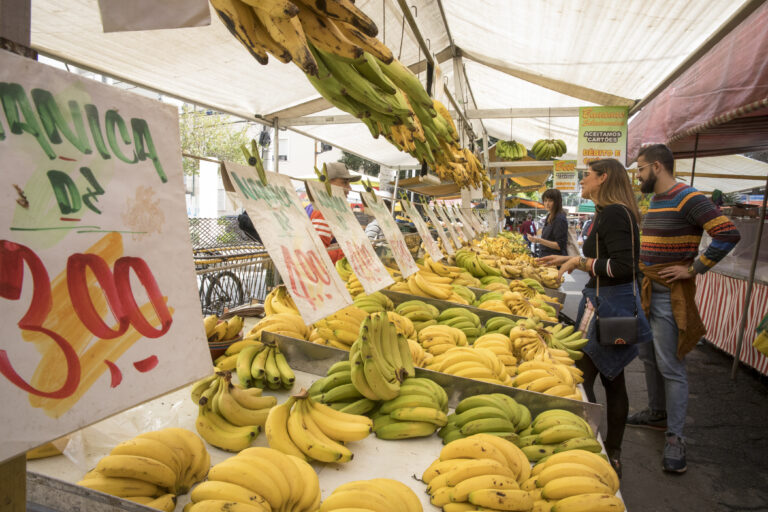“People don’t know how to shop, and that’s not meant in a patronising way at all,” says Andrea Cheong, author of Why Do I Have Nothing to Wear? and founder of mending workshops across London.
Previously a fashion influencer, Cheong’s career shifted when she began criticising and examining the fundamentals of fashion: their composition and tailoring.
The content creator reviews boutique and high street brands on her Instagram and TikTok channels, unpicking their sustainability claims while testing their materials and quality.
“Sustainable” is a popular greenwashing buzzword used by the fashion industry. Looking at fabric composition is one easy yet effective way to judge the real durability and climate impact of what you’re buying.
“I knew what quality clothes were, because my mother had drilled it into me when I was younger,” Cheong explains, “but I still wasn’t following my own advice.”
“I realised that all these claims of using recycled material weren’t legit, especially when the clothes were constructed so poorly that they were falling apart.”
Cheong hopes to break down the common misconception that price indicates quality.
In one video review of cult designer Sandy Liang, she shows how a £600 jacket is made of 100 per cent polyester, and a £300 grey knitted jumper made of 35 per cent nylon.
“No everyday piece of clothing needs to have synthetics in it. It just doesn’t,” says Cheong.
Synthetic fibres made of crude oil have become responsible for up to nine per cent of annual microfibre pollution ever since they surpassed the use of cotton in the mid 1990s. Five hundred thousand tons of microfibers are released from these textiles into the ocean each year from washing machines — the equivalent of 50 billion plastic bottles.
Organic materials such as cotton don’t have the same problem, but they still take up valuable land space and use vast quantities of water in the growing and manufacturing process.
As an alternative, some textile companies are developing innovative biobased solutions that make use of waste materials.
“Everything we do going forward is to the sustainability line,” says A.R. Swan, senior marketing director at Ultrafabrics, speaking from the company’s stall at the Clerkenwell Design Fair in central London.

Ultrafabrics make sustainable alternatives to animal leather and vinyl fabric (PVC). They think about emissions at every stage of production, from solvent recycling and solar panels at their factory, to donations of offcuts to avoid material going to landfill.
The American-Japanese company was established in 1999, when it moved into a Japanese mill that had been in use since the sixties. “The process is pretty much the same, but we’re upgrading the ingredients all the time,” explains senior manager Genevieve Boaler.
No everyday piece of clothing needs to have synthetics in it. It just doesn’t
Andrea Cheong
These upgrades have led to their biobased collections. “We make a resin out of biobased ingredients to replace [plastics],” says Boaler holding up the supple, leather-like materials and the raw resources they are made from side by side.
Since the company manufactures its products in Japan – where scallops are widely consumed – it repurposes shells by crushing them into a powder that is then spun into yarn.
Back on the high street, Sam Mabley, co-founder of British ethical clothing brand YesFriends, is working to restructure the business model of fashion to balance affordability, sustainability, and ethical practices.
He learnt while running sustainable pop-ups in Bristol that smaller brands will apply a large markup to cover their own costs, followed by another price hike for the retailer. “So if they bought a T-shirt for a fiver, it will cost £25 plus in a store, because you’ve got to account for all of those costs.”
“I was being interviewed for a sustainable fashion blog, and the interviewer said, ‘I’ve heard it costs £30 to make a fully ethical T-shirt,’ and I just thought, ‘that’s not true at all’.”
That’s when Mabley decided to found his company in 2013, selling natural-fibre garments produced in highly certified factories. The starting price? £12 for a T-shirt or tank top.
Their direct-to-consumer model – shipping straight from factory to shopper – enables these affordable prices. They also ensure high quality working conditions with a pioneering bonus scheme for their garment workers where shoppers can directly tip the people who make their clothes.
“I think it’s simultaneously a really complicated issue, because there’s all these macroeconomic problems going on with it, and it’s governments and trade unions and all of this kind of stuff,” says Mabley.
“Then it’s also a really simple, solvable problem. If more brands wanted to make changes, they could.”
In the meantime, take Andrea Cheong’s advice: check the inside labels of your clothes.




